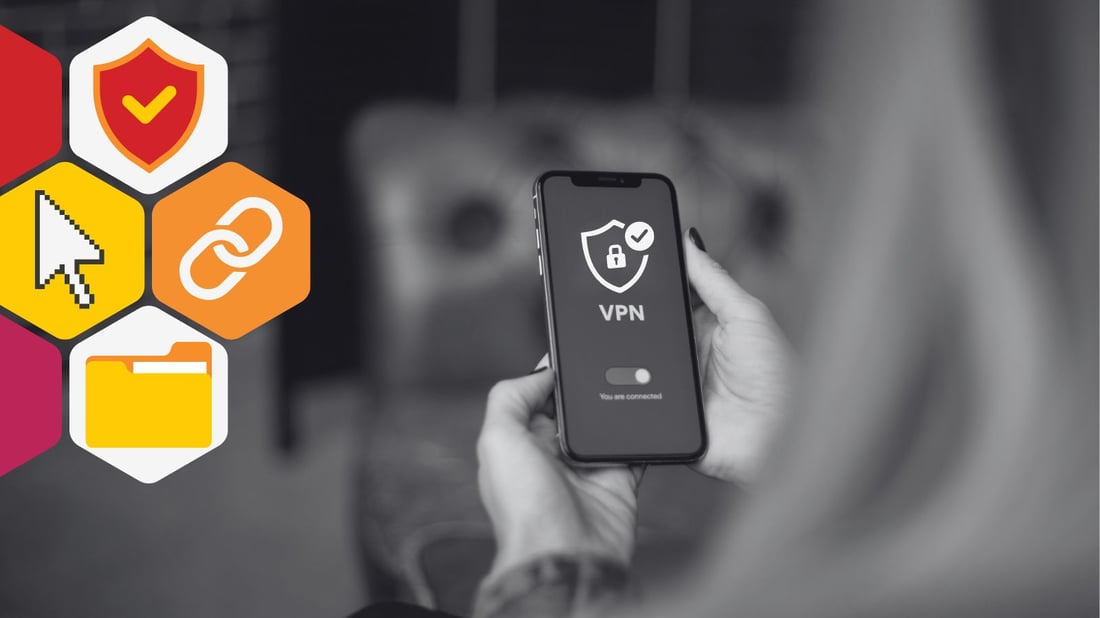From Couch to Keyboard: Safe Online Practices for Remote Workers
Working from home does have its perks—saving on lunch costs, taking mid-day walks, and even swapping out your office chair for a yoga ball. But with...
![]() Team CM
Oct 29, 2025 8:00:00 AM
Team CM
Oct 29, 2025 8:00:00 AM

When attackers want to access your business, they don’t always aim for the server room. Increasingly, they’re finding their way in through overlooked entry points—quiet vulnerabilities created by the habits and tools we use at home—by targeting your employees’ personal lives, homes, and even families. This isn’t a fringe tactic anymore. It’s a strategic shift in the threat landscape.
The traditional security perimeter was already fading with the rise of remote and hybrid work. But what’s emerging in its place isn’t just a technical boundary. It’s the human boundary—an expanding, porous edge defined by where employees live, learn, and log in.
Welcome to the era of home-as-an-attack-vector.
Attackers increasingly target employees’ households, families, and personal devices as indirect paths into corporate networks.
Smart home gadgets, shared family devices, and reused passwords expand the attack surface far beyond the office.
Nation-state and organized cybercrime groups exploit this “domestic perimeter” using phishing, social engineering, and AI-driven deception.
Protecting against this means shifting from “workplace awareness” to whole-person digital safety — supporting employees and families together.
Companies that treat home life as part of human risk management build stronger, more resilient cultures of security.
Are Families in the Cyber Crosshairs?
Yes, home and family are not immune to being targeted by cybercriminals. Here’s the unsettling truth: malicious actors know that people let their guard down at home. They exploit that fact.
A child on a gaming device can click malware-laced ads that compromise the home Wi-Fi.
A spouse may innocently forward a phishing email to a work-shared calendar.
IoT devices—baby monitors, thermostats, even smart refrigerators—create a web of poorly secured endpoints within reach of corporate systems.
Add AI-generated phishing lures, impersonation deepfakes, and the reuse of passwords across personal and professional accounts, and suddenly the security risk multiplies.
This isn’t about blaming employees. It’s about recognizing that the attack surface now includes the full household—and addressing it as such.

Most CISOs already know about the blurring of personal and professional digital lives. But the industry is lagging in response. We patch operating systems—why not patch the human environment that connects to it all?
Human risk management must expand beyond the workplace firewall.
Cyber culture has to include guidance and support for family digital safety.
Whole-person security isn’t nice-to-have—it’s a strategic necessity.
The adversary has already shifted their playbook. If our security strategies don’t follow, we’re playing defense blindfolded.
Social Engineering via Kids: A cybercriminal poses as a school official to gain access to a parent’s device and steal sensitive company data.
Shared Devices: A family tablet used for a video call is later used to log into a work app, still carrying malware from a previous download.
Targeted Surveillance: High-value targets are tracked via unsecured smart home cameras or fitness apps with geo-location features.
This isn’t hypothetical. Nation-state groups and sophisticated cybercrime gangs are already running these tactics.
You don’t need to secure every toaster. But you do need to:
Educate your workforce about home risk vectors — and make it personal, not patronizing.
Provide opt-in family security training — extend cybersecurity guidance to partners and children.
Include personal digital hygiene in your security policy — clarify what’s in-scope and support better habits.
Promote password managers and MFA across personal and shared accounts.
Offer curated, trusted resources — blogs, videos, and checklists that demystify threats and offer practical steps.
This is where the next generation of human risk management shines. Not in telling people what not to do, but in giving them tools to live and work more securely across every context.

The lines between corporate and personal cybersecurity are gone. To build a truly resilient workforce, organizations must:
Think about humans as endpoints across their whole digital footprint
Recognize that culture is contagious—people who feel safe at home bring better habits to work
Shift from awareness campaigns to adaptive enablement—meeting people where they are, in their real lives
This isn’t just about avoiding risk. It’s about investing in trust, wellbeing, and long-term resilience.
Acknowledge home networks as part of enterprise risk. Include household digital hygiene in your security policies and awareness programs.
Equip employees’ families. Offer optional family-friendly learning, guides, or password-manager licenses to extend protection beyond the workplace.
Simplify secure habits. Promote password managers, MFA, router updates, and segmented home Wi-Fi — realistic steps people can actually do.
Collect human-risk signals. Use surveys or baselines to understand where personal-life digital behaviors intersect with organizational risk.
Shift to human risk operations. Evolve from compliance training to continuous, culture-based risk management that includes the household perimeter.
Want to see how we help companies build whole-person cybersecurity programs that extend beyond the firewall? Talk to our team.
“Home as an attack vector” refers to cybercriminals exploiting personal environments — family members, devices, and home networks — to infiltrate corporate systems. According to Trend Micro’s research on hybrid work threats, attackers increasingly use compromised home routers, IoT devices, and shared accounts to gain indirect access to business data. Even simple household oversights, like using the same password at home and work, can open the door to an enterprise breach.
Attackers often exploit weakly secured Wi-Fi, outdated smart devices, or shared logins across personal and professional accounts. Once a personal device is compromised, session tokens, VPN credentials, or cloud sync data can expose company assets. The Verizon Data Breach Investigations Report (DBIR) notes that over 80% of breaches involve a human element, including credential theft and social engineering — tactics that frequently begin at home.
(For deeper insight, see our internal article on Human Risk Management.)
Use unique, strong passwords and a password manager for all family accounts — CISA recommends this as a top protection measure.
Turn on multi-factor authentication (MFA) wherever possible — see CISA’s guide on MFA.
Keep all routers, IoT devices, and personal laptops up to date with firmware and OS patches.
Create separate Wi-Fi networks for work devices, kids’ gadgets, and smart home systems.
Encourage every family member to complete short digital-safety training modules or watch videos on spotting phishing attempts.
Forward-thinking organizations treat “home” as part of their human-risk surface. The Cybersecurity Dive report on hybrid workforce risk highlights that many firms now extend policies, password managers, and optional awareness programs to family members. Companies can also run opt-in family security campaigns and include digital wellbeing in human risk baselines — an approach advocated by Cybermaniacs’ HumanOS model.

Working from home does have its perks—saving on lunch costs, taking mid-day walks, and even swapping out your office chair for a yoga ball. But with...
4 min read

Imagine your organization's cyber defenses as a well-trained emergency response team. (Work with us here). Just like a strong immune system in a...
5 min read

Ever felt that unnerving sensation of someone peeking over your digital shoulder while you're deeply immersed in binge-watching your favorite show or...
6 min read
Subscribe to our newsletters for the latest news and insights.
Stay updated with best practices to enhance your workforce.
Get the latest on strategic risk for Executives and Managers.